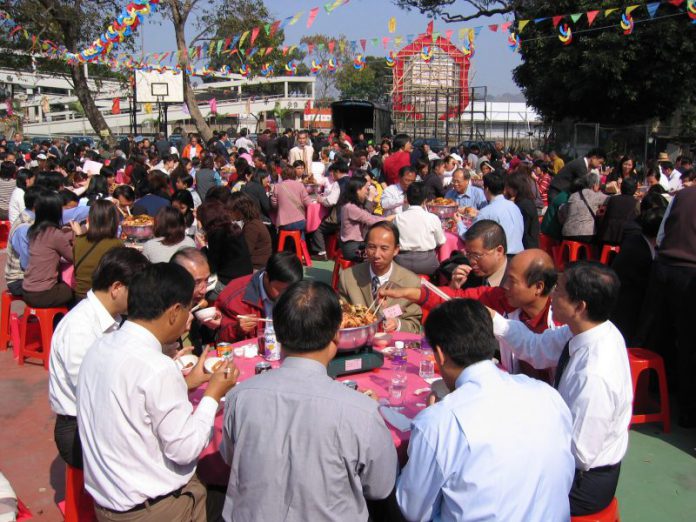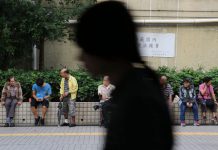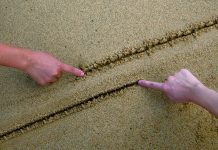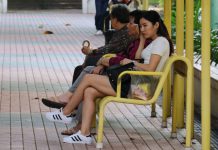Identity politics rears its head in New Territories indigenous villages
By Gloria Lee and Avery Tsui
Take a 10 minute walk from Sheung Shui station and you will leave the skyscrapers behind you and arrive at Sheung Shui Wai, a collection of indigenous villages and the home of the Liu clan,
The “wai” in Sheung Shui Wai means walled. Walled villages used to be common throughout southern China, including in the New Territories,walls were erected to protect inhabitants from pirates and other marauders. Many of the walls have now been partly or completely demolished and recent decades have seen big changes to tradtional village life.
Liu Oi-ting, 20, is an indigenous Sheung Shui Wai inhabitant, who takes pride in her indentity. “Being an indigenous inhabitant in the Wai village gives me a special sense of identity,” Liu says, but she acknowledges the bond among villagers is not as strong as it once was.
Liu’s sister is nine years older than her and she thinks her sister has a stronger bonding with other villagers because there used to be frequent activities that involved the whole village. “It is not the same in my generation.” says Liu.

Over the years, indigenous villagers have moved out of the villages and outsiders have moved in. This changing demographic has also influenced village culture, says Liu. However, she thinks relations between indigenous and non-indigenous residents are generally good, except when there are conflicts over different living habits. For instance, there was a conflict between her family and the new immigrant family next door who would throw rubbish from their terrace that accumulated outside the Liu family’s front door.
In Sheung Shui Wai, non-indigenous residents are welcome at many village events, such as the mid-autumn festival gatherings and ‘poon choi’ feasts. But clan-based events, like the worship of ancestors rarely involve non-indigenous participants. Liu says this is more about clan membership than any kind of segragation. “No matter how integrated they are with us, they can never be part of our family, our ties can only be that of friends.” she explains.
Lee Hoi-choi who lives in Kam Tsin, an indigneous village not far from Sheung Shui-wai echoes Liu’s sentiments – but from the perspective of a non-indigenous villager. “Actually we [non-indigenous villagers) don’t want our ties with the indigenous people to be too intimate either,” says Lee who moved into Kam Tsin, the home of the Hau clan, 19 years ago. Lee says that overall, he enjoys good relations with his indigenous neighbours and there is little difference between the indigenous and non indigenous Kam Tsin residents.
However, Lee knows there is one big difference between himself and his indigenous neighbours and that is they have “ding” rights. This means that male indigenous villagers who are descended from the male line from a resident of a recognised New Territories village in 1898, can apply to build a house for himself in his own village as long as he owns his own land or can get government land at a premium.
This is sometimes easier said than done and Lee understands that some villagers cannot get the land or have financial difficulties in building their ding house for self-use. However, he also sees indigenous people selling their ding rights and he questions why they can retain this privilege when they are just profiteering from it.
“The biggest beneficiaries are not those who build the house,” Lee says, “it’s the people with power.” In the villages, those with the power are the village leaders and representatives on rural committees and the Heung Yee Kuk.
While the boundary between indigenous and non-indigenous inhabitants is not usually visible, it comes into focus when there are conflicts. Lee recalls a dispute he had with an indigenous villager who tried to build his ding house where it would block his carspace. Lee sought help from the village resident representative but nothing was done until he directly complainted to the Home Affairs Department.
“The resident representative [who is also an indigenous villager] is on their side.” Lee says, “It makes sense if he helps the indigenous people, right?”
In 2003, the government introduced a “dual representative” system in an attempt to balance the rights of indigenous inhabitants and non-indigenous villagers. Regardless of where they were born or live, indigenous villagers as defined by the clan register, have the right to elect an indigenous representative for the village, Whereas all residents of the village, including non-indigenous villagers who are Hong Kong permanent residents and have lived there for at least three years, can vote for the resident representative.










































